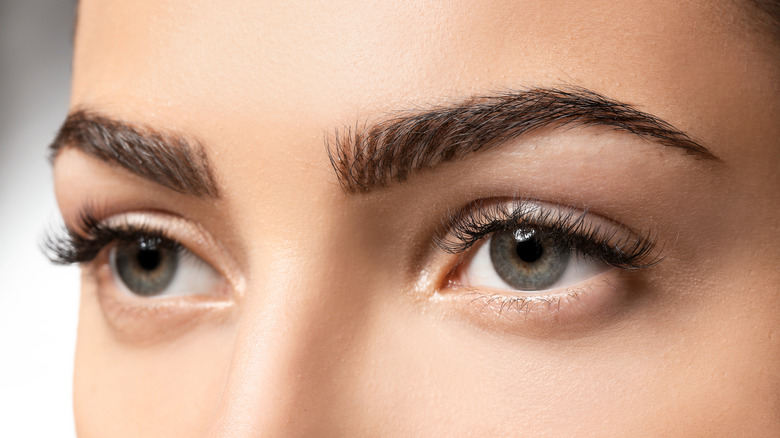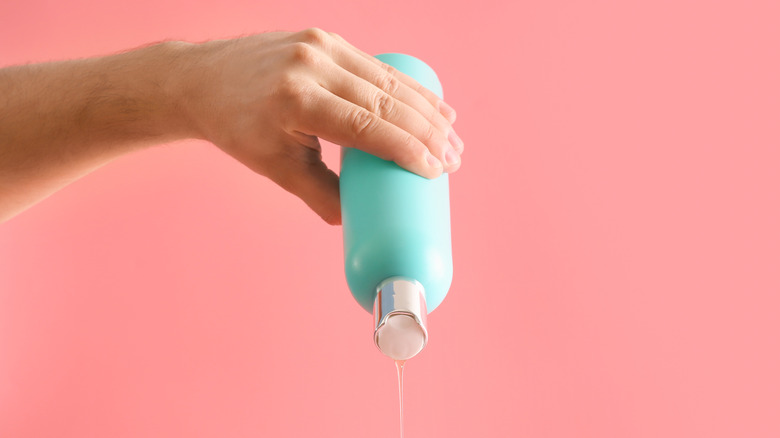The Truth About Eyebrow Dandruff
Believe it or not, dandruff doesn't just occur on your head. Medically known as seborrheic dermatitis, it can actually form almost anywhere on your body, including your eyebrows, resulting in dry, itchy, and flaky skin. As David Lortscher, M.D., dermatologist, and CEO of Curology told Byrdie, "Seborrheic dermatitis occurs in areas of the body that are rich in oil glands, so the central face is a prime target. Many people also have itching and flaking in the scalp, although both areas are not necessarily affected; the central chest may be involved as well."
According to Ilyse Lefkowicz, M.D., Head & Shoulders dermatologist, there are three common causes of dandruff. "The presence of Malassezia globose [a fungus] on the skin, a genetic predisposition to dandruff, or the presence of sebum," she explained to Women's Health. You can usually tell it's seborrheic dermatitis if you see can red or pink inflammation under your brow hair.
Treating eyebrow dandruff is easy
Luckily, treating eyebrow dandruff is as simple as treating dandruff on your head. "You can use an anti-dandruff shampoo, such as Head & Shoulders or Selsun Blue, and gently lather the eyebrows and rinse, taking care not to get it into your eyes," dermatologist Monique Chheda, M.D. told SELF. However, Lefkowicz notes that if your dandruff is severe, you should really make an appointment to see a dermatologist.
Whatever you do, it's important that you treat the area gently. "You have to be very careful — removing the flakes can irritate the skin and leave you with open skin," dermatologist Michelle Henry, M.D., of the Laser & Skin Surgery Center of New York, warned SELF. "It's not going to heal quicker. Aggressively removing the flakes is not going to get rid of the source."
Lefkowicz adds a few more tips, noting, "Avoid substances like glycolic acid, benzoyl peroxide, acne medicines, or anti-aging creams as these will only cause further irritation."

